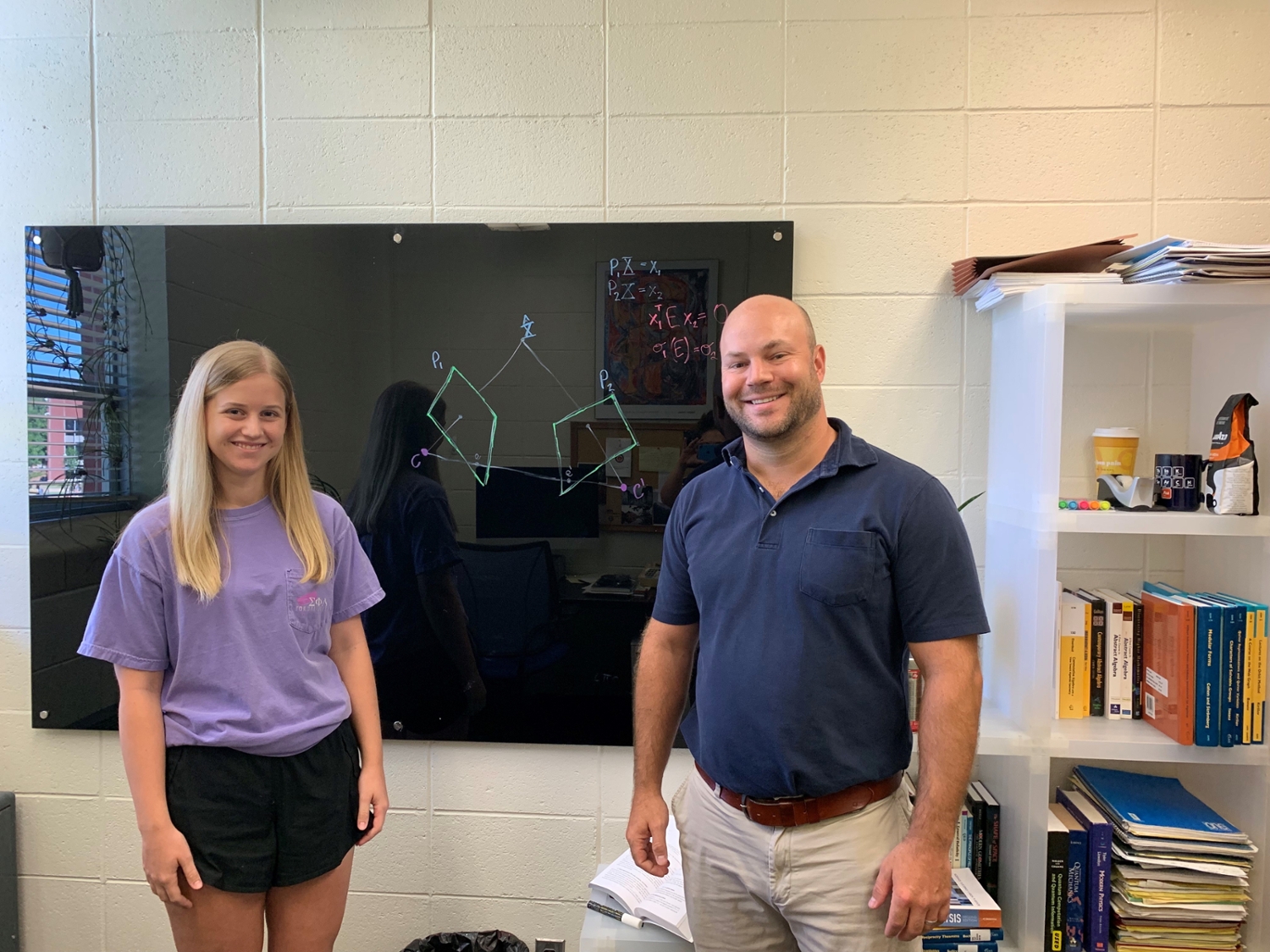Mathematics Professor Working to Advance Computer Vision Technology
Computer vision is a field connected to artificial intelligence through which researchers train computers to interpret and understand the visual world. For example, using digital images and deep learning models, machines can accurately identify and classify objects and then react, which is crucial for technology such as self-driving cars.
Dr. Luke Oeding, associate professor and associate chair in the Auburn University Department of Mathematics and Statistics, is working to help make progress with the mathematics that makes computer vision a reality. Auburn University Mathematics senior Leann Kopp is assisting with the research.
“There’s a lot of interesting mathematics that goes into the algorithms that are behind those pieces of technology, and that’s really where we come in. We’re working on understanding the mathematics behind those algorithms better,” Dr. Oeding explained. “If we can make any small improvement to the efficiency or stability of the core algorithms that work in the pipeline of vision algorithms, then we make the end product better, especially since these core algorithms get used thousands upon thousands of times for applications related to navigation and augmented reality.”
Kopp has been working with Dr. Oeding since her sophomore year.
“I really enjoy this work because it involves several different subjects, not just math,” Kopp shared. “I’ve learned a lot about programming and artificial intelligence in general. It’s really interesting to learn how much information we can get from just a few simple pictures.”
Dr. Oeding has been at Auburn since 2013. He was working as a postdoctoral fellow at the University of California, Berkeley, and his mentor suggested he work on a problem that was related to the algebra behind certain structure from motion algorithms in computer vision. This began his interest in computer vision.
“My collaborator and I solved this very pure math question that had been unsolved for more than 20 years, and which originally arose in the context of computer vision,” he said.
Dr. Oeding has partnered with the GavLab in Auburn University’s Department of Mechanical Engineering, the United States Army, and the company Integrated Solutions for Systems on computer vision research. One broader goal of this work is to help create navigation software that could one day be applied, for instance, on university campuses to help students navigate the area when GPS isn’t quite working.
“It would be interesting to know if a security camera could share its position with the camera on your phone,” Dr. Oeding said. “If the two cameras were both looking at the same scene, say on the concourse, then that’s enough information to tell you where you are and in which direction you’re pointing. Though there are pieces of this algorithm that already exist, we’re trying to fill in the gaps and make small mathematical improvements that will help make the theory a reality -- that’s the basic goal to this type of project.”
Dr. Oeding said he believes the future of computer vison is exciting and that we will see major advances through the next few years coming from the confluence of researchers from many different disciplines working together.
“People are really excited about applying artificial intelligence and machine learning in the realm of computer vision,” he said. “We’re trying to make small improvements to part of the larger picture.”
Latest Headlines
-
02/12/2025
-
02/11/2025
-
02/10/2025
-
01/30/2025
-
12/03/2024

